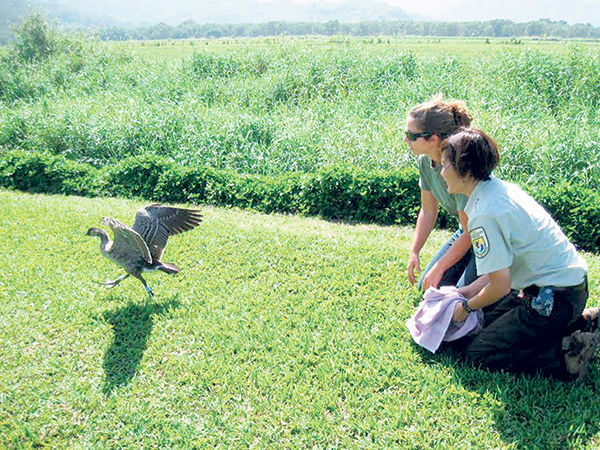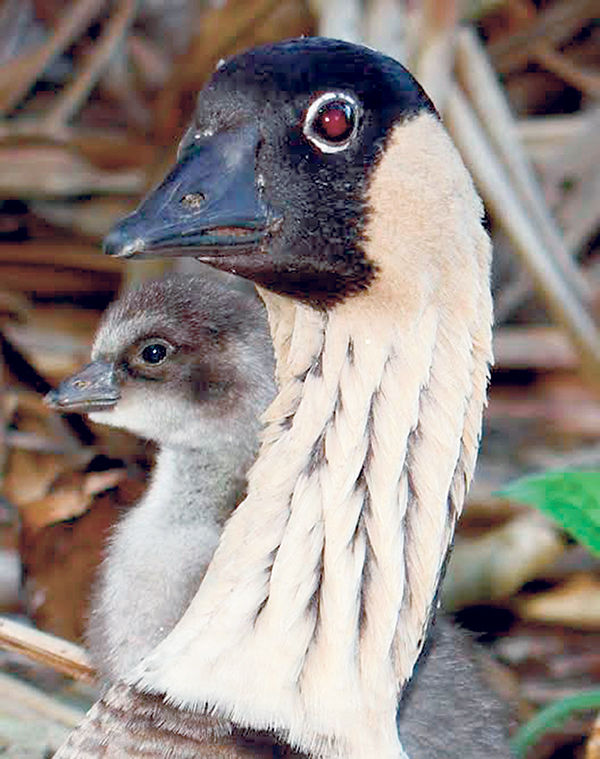One of Kauai’s oldest nene, introduced to the island in 2000 as part of original re-population efforts, recently died. Black XL, named by the band she wore on her ankle, was one of 24 endangered birds released on the Garden
One of Kauai’s oldest nene, introduced to the island in 2000 as part of original re-population efforts, recently died.
Black XL, named by the band she wore on her ankle, was one of 24 endangered birds released on the Garden Isle 15 years ago during that initial push. She was also one of 12 nene injured or killed since January after being struck by a motorist.
“She was an older bird and a successful breeder for many years,” said Kim Uyehara, biologist for the Kauai National Wildlife Complex through the U.S. Fish and Wildlife Service.
Officials are asking motorists to take extra precaution to prevent more deaths because many nene are flightless this time of year, and attracted to roadsides where runoff and streetside mowing provide easy access to food and water for the land-bound birds.
“It is the time of the season — the end of breeding season,” Uyehara said.
From January through early May, many nene stick to the ground for a couple of reasons. First, it’s the breeding season, so the newly born aren’t yet able to take to the skies. Also, adults go through molting, which is when they shed their feathers. Taken together, that means families of birds stick together on the ground.
And when mowing and grass maintenance turns up easy to access to insects to eat along the shoulders of the road, the combination can prove fatal for the state bird. On top of that, the spring season is when the refuge experiences increased visitor numbers, so more cars are on the road.
“They’re particularly vulnerable this time of year,” Uyehara said.
Sensitive areas are primarily on the North Shore, near the Kilauea Point National Wildlife Refuge and around Hanalei. Signs are posted along the highway warning motorists to be on the lookout for wildlife, decorated with a silhouette of Hawaii’s precious goose.
“Just giving them some extra time, being patient,” Uyehara said of the proper method to take while keeping a lookout for the gray and black bird.
On Friday, a nene was struck on Olohena Road in the Wailua Homesteads. Of the 12 hit since January — a “majority” of which have died, she said — seven have been struck since the end of March.
With their numbers shrinking to 30 in Hawaii in the 1950s, the nene population has grown thanks to rearing efforts in England, where they were transported before making their way back to the islands.
Today, thanks to the reintroduction efforts in 2000, 2,500 of the birds call Hawaii home — half of which live on Kauai thanks to its lush environment and lack of a mongoose population.
Still, Uyehara said, extra precaution needs to be exercised around roadsides and near rivers to keep the protection efforts heading in the right direction. By May, most of the birds should be taking flight again.
“The nene is a success story,” Uyehara said of the population which is known as the world’s rarest goose. “It’s not without challenges, but the conservation has been a success story.”



